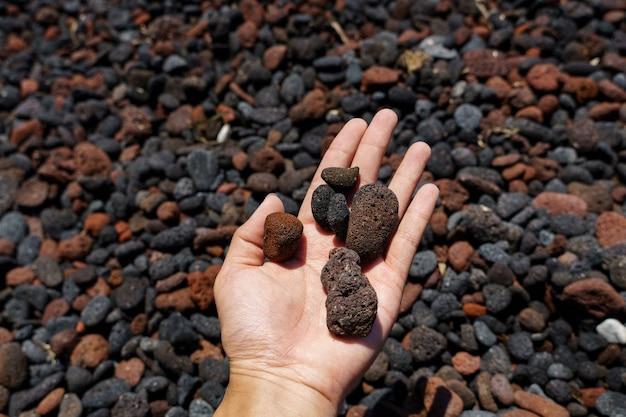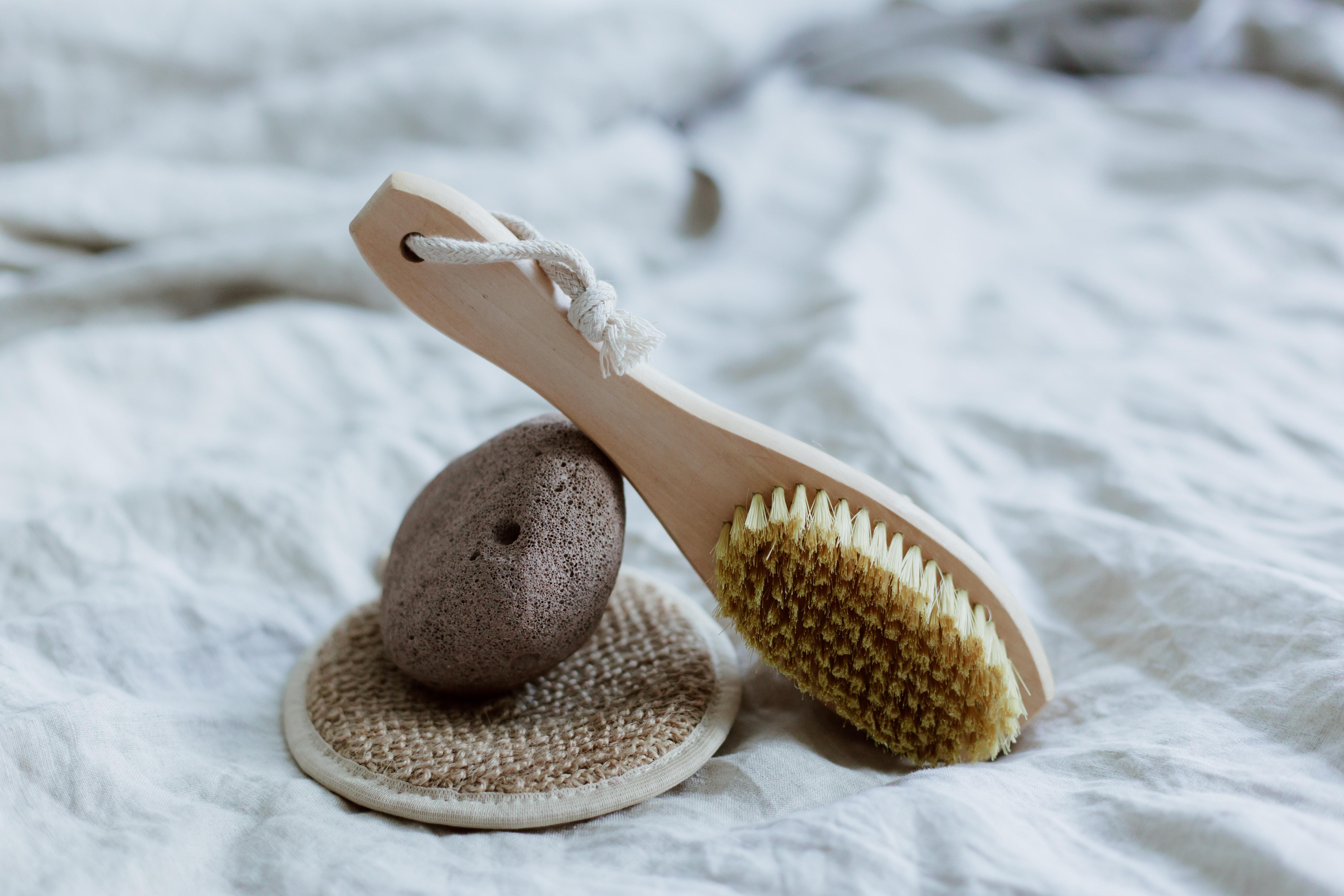Pumice stones have become a popular tool for exfoliating and achieving smooth, soft skin. These lightweight volcanic rocks work wonders on rough patches, calluses, and dry skin. But just like any other beauty tool, pumice stones need regular maintenance and, eventually, replacement. In this blog post, we will explore the recommended frequency for replacing a pumice stone and answer some common questions related to its usage. So, if you’ve ever wondered how long your pumice stone should last or if it’s safe to use on certain surfaces, keep reading for all the answers.
From tips on caring for your pumice stone to alternatives you can use, we’ve got you covered. Discover the truth about using a pumice stone on your face, the potential risks of reusing a pumice stone, and even how to clean a toilet with this volcanic wonder. We’ll also delve into the multiple uses of pumice stones and if they can harbor bacteria or grow mold. So, stick around as we tackle these common questions and provide you with insightful information on keeping your pumice stone in tip-top shape.
How Often Should You Replace a Pumice Stone
Understanding the Lifespan of Your Trusty Pumice Stone 🧽
If you’re a fan of smooth and callus-free feet, chances are you have a pumice stone in your bathroom arsenal. But have you ever wondered how long this magical volcanic rock can withstand the test of time? How often should you bid farewell to your old faithful pumice stone and invite a new one into your life? Let’s dive into the intriguing world of foot exfoliation and find out!
Signs that It’s Time to Let Go of Your Pumice Stone ☹️
Just like any skincare tool, pumice stones have a limited lifespan. Over time, these tiny rock warriors will begin to show signs of wear and tear. One of the telltale signs is erosion, where the surface becomes smoother and less abrasive. When your pumice stone starts losing its gritty texture, it’s a clear indication that retirement is on the horizon.
Another sign to watch out for is the accumulation of dead skin and bacteria within the stone’s pores. Despite our best efforts to keep them clean, pumice stones can harbor an unsavory collection of nasties. If you notice discoloration, funky odors, or difficulty in cleaning those stubborn crevices, it’s time to bid adieu to your loyal foot companion.
How Often Should You Replace Your Pumice Stone? ⌛️
While there’s no one-size-fits-all answer, most experts recommend replacing your pumice stone every two to three months. However, this timeline can vary depending on factors such as usage frequency, foot conditions, and personal hygiene habits. If you’re a devoted foot-filer and use your pumice stone on a daily basis, you might notice signs of wear sooner, signaling the need for a new one.
For those combating more stubborn calluses or dealing with foot conditions like plantar fasciitis, it may be wise to replace your pumice stone more frequently. In these cases, a monthly refresh might be just what your feet crave. Remember, it’s all about listening to your sole’s needs and adapting accordingly.
Maintaining the Longevity of Your Pumice Stone 🛀
While saying goodbye to an old pumice stone can be bittersweet, there are ways to extend its lifespan and squeeze every last exfoliating drop out of it. After each use, ensure you rinse your pumice stone thoroughly, removing any leftover dead skin or soap residue. You can even lengthen its life by using a toothbrush to gently scrub away any stubborn debris.
Consider storing your pumice stone in a clean and dry container. This will help prevent the growth of bacteria and maintain its abrasive powers for longer. And remember, sharing is not caring when it comes to pumice stones. Keep yours strictly to yourself to avoid cross-contamination and potential foot-related woes.
To Sum it Up… 📝
In conclusion, pumice stones are fantastic foot warriors that battle calluses with their gritty charm. But like all warriors, they will eventually need to retire. Keep an eye out for signs of erosion and bacterial buildup, and replace your pumice stone every two to three months. Adapt the frequency based on your exfoliation routine and foot conditions. With proper care and a keen eye for “stone-aging,” your pumice stone will serve as a loyal foot comrade, leaving your feet silky smooth and ready to conquer the world, one step at a time!
So, embrace the lifecycle of your pumice stone, and remember, a fresh stone equals happy feet! 🦶💃
FAQ: How Often Should You Replace a Pumice Stone
You’ve got questions, and we’ve got answers! When it comes to pumice stones, there are plenty of queries that need answering. We’ve compiled a comprehensive FAQ-style guide just for you! So, without further ado, let’s get down to the nitty-gritty of pumice stone care.
Can You Use a Pumice Stone on Your Face
No! While pumice stones are fantastic for exfoliating rough skin on your body, they should never come anywhere near your precious face. The skin on your face is delicate and sensitive, so opt for gentler exfoliation methods that won’t leave you looking like a tomato.
Can You Reuse a Pumice Stone
Absolutely! Pumice stones are like the Energizer Bunny; they keep going and going. As long as your pumice stone is still doing its job effectively and hasn’t worn down to a nub, feel free to give it another go. Just make sure to keep it clean and dry between uses to prevent the growth of icky stuff.
What Can I Use Instead of a Pumice Stone
If you find yourself sans pumice stone, fear not! There are alternatives that can get the job done. A foot file or a loofah can be just as effective in sloughing off dead skin and leaving your feet feeling soft and smooth. Experiment with different options to find what works best for you.
Is It Safe to Use a Pumice Stone on the Toilet
Hmm, let’s not get too carried away now! Pumice stones are not meant for handling dirty business, both literally and figuratively. Leave your pumice stone to work its magic on your feet and call in reinforcements (toilet bowl cleaners) for any porcelain-related issues.
How Long Should You Use a Pumice Stone
Like a dance party, pumice stone usage should stay within reasonable limits. A few minutes per session is all it takes to remove dead skin and calluses from your feet. Remember, moderation is key!
When Should I Get Rid of My Pumice Stone
When your trusty pumice stone starts resembling a tiny pebble, it’s time to bid it farewell. As a general rule of thumb, replace your pumice stone every two to three months—or sooner if it becomes excessively worn or starts holding onto unwanted bacteria.
Is Lava Rock a Pumice
Indeed it is! Lava rock is simply another name for pumice. It’s like having a secret identity—same superhero powers, but with a different name.
Can Pumice Stones Grow Mold
Eww, moldy pumice stones—no thank you! To prevent this nightmare scenario, make sure to rinse your pumice stone thoroughly after each use and allow it to dry completely. Mold thrives in moist environments, so keep it clean and dry to avoid any unpleasant surprises.
Do Pumice Stones Wear Out
Just like your favorite pair of jeans, pumice stones do have a shelf life. Over time, they will naturally wear down with each use. So, enjoy its exfoliating powers while they last and be prepared to replace it when it no longer gets the job done.
Are Pumice Stones Safe
Absolutely! As long as you use them correctly and avoid using them on sensitive areas, pumice stones are perfectly safe. Embrace the power of exfoliation, but remember to be gentle and listen to your skin’s needs.
Why Does Pumice Stone Remove Hair
Ah, the mysteriously magical hair removal properties of pumice stones. While they aren’t designed specifically for hair removal, the coarse texture of pumice stones can help to buff away unwanted hair when used gently. It’s like a multitasking superhero for your feet!
What Are 5 Uses for Pumice
Pumice stones are versatile little wonders. Here are five out-of-the-box ways you can put them to use:
- Sharpening knives and blades
- Removing pilling from fabric
- Cleaning grout and tile
- Removing excess paint or glue from surfaces
- Creating unique DIY crafts or decorations
Do Pumice Stones Hold Bacteria
It’s a potential germ party if you’re not careful! Pumice stones can harbor bacteria if not cleaned correctly. Give your pumice stone a thorough rinse after each use, scrub it with soap occasionally, and let it dry completely. Keep it clean, folks!
How Do You Clean a Toilet with a Pumice Stone
Oh, brave soul, if you dare to venture into the depths of toilet cleaning, here’s how you can do it with a pumice stone:
- Wet the pumice stone and the toilet bowl.
- Gently scrub the stained areas with the wet pumice stone, applying light pressure.
- Flush the toilet to remove any residue.
Remember, this isn’t for the faint of heart or squeamish individuals, so proceed with caution!
What’s Better: Pumice Stone or Foot File
Ah, the age-old question of the exfoliation world! Both pumice stones and foot files have their strengths. Pumice stones are great for more delicate and sensitive skin, while foot files are better for tougher calluses. It all depends on your personal preference and the condition of your feet.
Does Pumice Stone Remove Hair from Roots
Nah, that’s a job for the professionals! While pumice stones can help to remove hair, they won’t pluck it out from the roots. For that, you’ll need your trusty tweezers or a visit to the waxing salon. Let’s leave the root removal to the experts.
How Many Times Can You Use a Pumice Stone
Ah, the great pumice stone lifespan debate! You can use your pumice stone as many times as it takes to achieve your desired level of foot smoothness. Just keep an eye on its condition and replace it when it starts looking worn out or loses its effectiveness. Goodbye, calluses!
Do Pumice Stones Make Feet Worse
Fear not! Pumice stones are here to save the day, not make it worse. With proper usage and a gentle touch, pumice stones can effectively remove dead skin and calluses, revealing softer and smoother feet. Just remember not to go overboard and treat your tootsies with care.
What Do Humans Use Pumice For
Humans have found some extraordinary uses for pumice stones throughout history. Here are a few examples:
- Skin exfoliation and callus removal
- Cleaning and unclogging pores
- Polishing and smoothing rough surfaces
- Gardening as a soil amendment
- Creating unique artwork and jewelry
Now you know just how versatile this volcanic wonder can be! Time to unleash the power of the pumice.
And there you have it—your ultimate pumice stone FAQ guide to keep you informed and amused. So, go forth and exfoliate with confidence, knowing that you’ve got all the answers when it comes to your pumice stone needs. Good luck on your journey to silky smooth feet!

